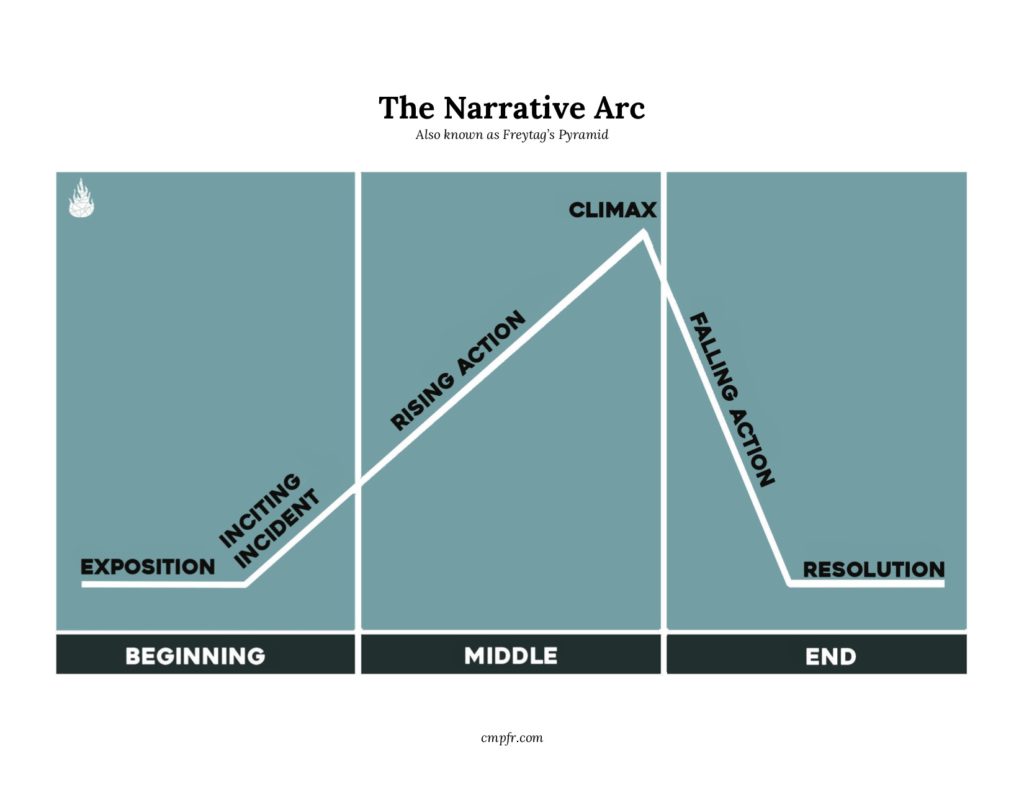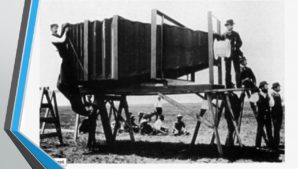Peripeteia– a sudden reversal of fortune or change in circumstances, especially in reference to fictional narrative.
Anagnoresis– the point in a play, novel or movie in which a principal character recognizes or discovers another character’s true identity or the true nature of their own circumstances.
Catharsis– the process of releasing, and thereby providing relief from, strong or repressed emotions.
Linear– progressing from one stage to another in a single series of steps
Chronological– (of a record of events) following the order in which they occurred
Sequential– forming or following in a logical order or sequence.
Circular structure– In a circular narrative, the story ends where it began. Although the starting and ending points are the same, the character undergo a transformation, affected by the story’s events
Time based– any artwork that has both physical and temporal dimensions. Contemporary artworks that include video, film, slide, audio, or computer-based technologies are referred to as time-based media works because they have duration as a dimension and unfold to the viewer over time
Narrative arc- literary term for the path a story follows. It provides a backbone by providing a clear beginning, middle, and end of the story \/

Freytag’s Pyramid /\- Devised by 19th century German playwright Gustav Freytag, Freytag’s Pyramid is a paradigm of dramatic structure outlining the seven key steps in successful storytelling: exposition, inciting incident, rising action, climax, falling action, resolution, and denouement
Exposition– a comprehensive description and explanation of an idea or theory
Rising action- starts right after the period of exposition and ends at the climax
Synopsis- a brief summary or general survey of something/an outline of the plot of a play, film, or book.
Condensed Equilibrium- Propelling narratives towards moments of immediate disruption to hook audience engagement
Metanarratives- Provide the audience with moments that draw attention to the fact that they are watching a story.
Todorov– most stories can be broken down into a BEGINNING / MIDDLE / END. Structuralist theorist Todorov presents this idea as Equilibrium, Disruption, New Equilibrium


